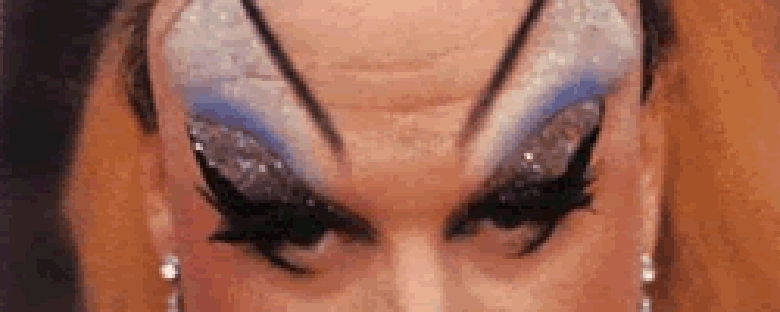Reviews
John Waters
USA, 1972
Credits
Review by Rumsey Taylor
Posted on 11 July 2004
Source New Line Home Video VHS
Pink Flamingos is the cinematic equivalent of the entire alphabet in one, prolonged belch. Neither act is entirely admirable (both, however, contain an odd, inherent humor), yet the determination and sheer will apparent in the production of each may be respected. Pink Flamingos, however relevant in this analogy, is not confined to the practices of immaturity; it is timelessly repulsive.
His breakout, Pink Flamingos is John Waters’ seventh film, first in color, and looks to be the obvious product of some spoiled drug habit or underprivileged childhood — neither would entirely account for the film’s unrestrained, nihilistic regard. Waters gleefully claims that the film is the grossest in history. It is a goal he achieves with ease in the eyes of many, for the reason alone that he aims well below the presupposed target of narrative film.
Waters’ direction bears similarity to the static gaze of a soap opera and the influence of Sixties’ mondo films. Mondo Cane, 1962, is the most known example (Waters entered the genre with Mondo Trasho). The action is captured with long takes, and there is little camera movement. The action, also, seems to have been captured in a guerilla style. The emphasis is solely on its content. Setups bear no functional significance, nor does the editing, though the film’s lack of polish enhances its attempt to last as the fundamental gross-out film.
Integral to his continuous additions to the gutter of film is Waters’ protégé, Divine, a three-hundred-pound transvestite. In this film, laden with bland acting and stilted dialogue, Divine (as Babs Johnson) is persistently apparent. And despite the film’s self-imposed operation as “an exercise in poor taste,” Divine emerges as one of its only successful elements. His acting is curiously accomplished (“Someone sent be a bowel movement!”) and committed — as in the final scene, which summates the entire thematic scope of the film.
Babs Johnson is given the title of “filthiest person alive” by several Baltimore tabloids. She inhabits a trailer with no address with her mother Edie (obese, and bound to a playpen), her son Crackers and daughter Cotton. Each possesses some demented fixation: Edie continually demands eggs; Crackers engages in ritualistic sex with dying chickens; Cotton watches her brother in his acts of perverted copulation.
As a pair, the Marbles (Connie and Raymond) also seek Babs’ title. The two are married, each with dyed hair (red and blue, respectively) on the more hirsute portions of their body. They capture women, chain them in a basement, and have them impregnated by their “rather fertile” servant Channing. The babies are sold to lesbian couples; the money invested in pornography and heroin pushers at local elementary schools. Waters’ attention to expositional detail is justifiably hilarious.
As a counterbalance to this humor are moments of shock. In the duration of the film, a chicken is killed, several expose their genitals in unerotic manners — what happens is not married, strictly, to the narrative, yet the film’s disregard for taboo is visible (and distantly admirable).
This denotes an arbitrary relationship between the film’s comedy and horror. Both elements are involved in the makeup of each scene, and thusly, any part of the film is either funny or shocking and often both. Despite this claim, the film has not been blessed with continued interest because of its comedy.
The film is ironically scored with 50s pop songs (“I’m Not a Juvenile Delinquent” plays as Babs purchases a slab of raw meat and immediately slops it between her thighs). Its peripheral details are also noticeably constructed: in addition to the Marbles’ aforementioned hair, the twosome’s place of dwelling is decorated with posters from other Seventies oddities, and the prop design bears thoughtful application. Several examples of graffiti, also, display hints towards Waters’ obsession with Charles Manson. In essence Pink Flamingos is filmic nihilism. This is continually interpreted as its redeeming aesthetic.
The film was screened at the Museum of Modern Art during a bicentennial Salute to American Film Comedy, and has been collectively recognized as denotative of cinematic innovation (the recent proliferation of gross-out comedies evidence this claim; the Farralley’s are particularly indebted). Pink Flamingos is convincing that it is a radical and developmental direction for film.
Writing of Pink Flamingos, however, functions to secure its notorious presence in the history of film. Describing it in any detail, in turn, relays the very spirit of the film: it is interpretably tasteless. Its merits however subjective, deeming John Waters’ Pink Flamingos a triumph is dubious, deeming it the grossest film ever made is less speculative; deeming it successfully gross, finally, is easy.
We don’t do comments anymore, but you may contact us here or find us on Twitter or Facebook.



